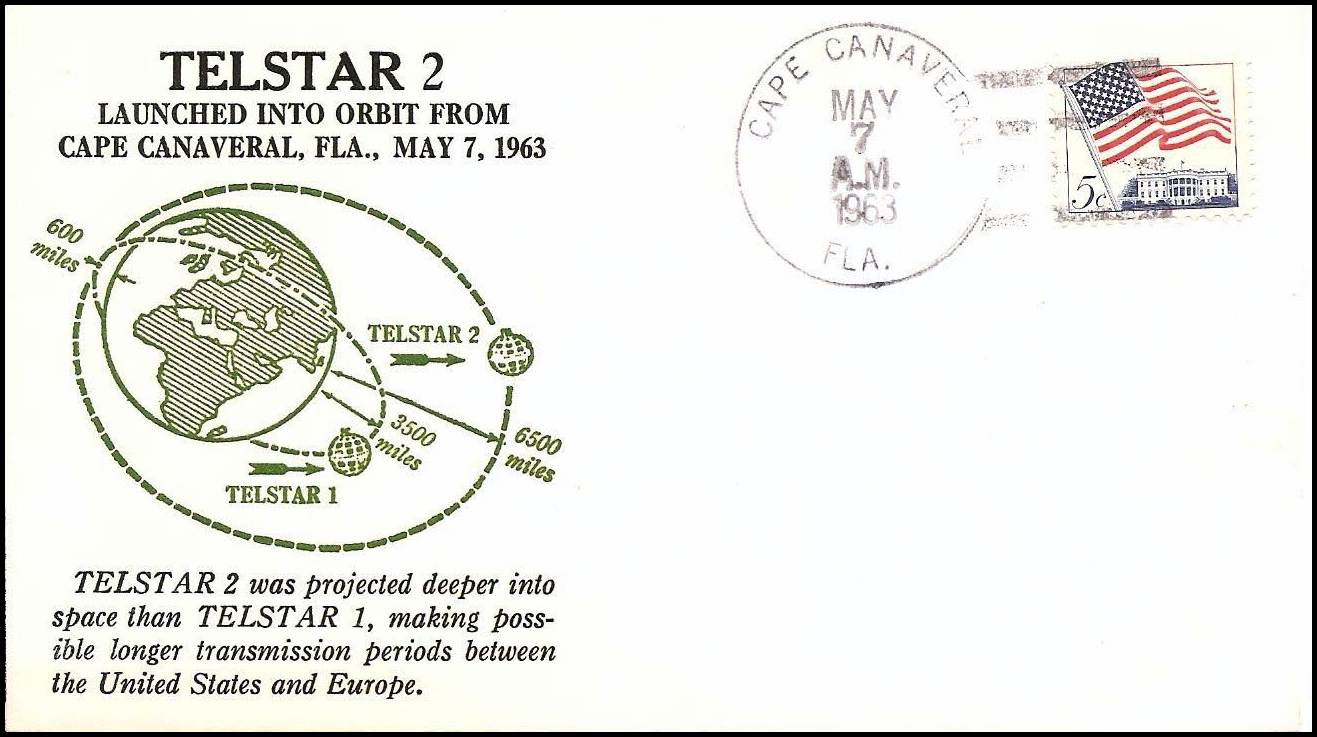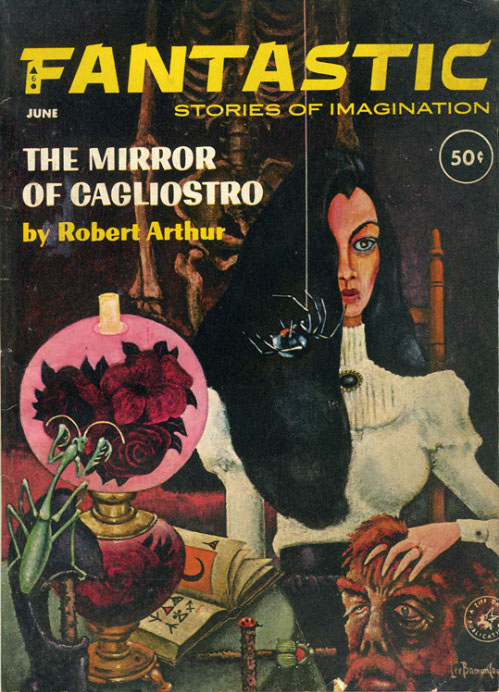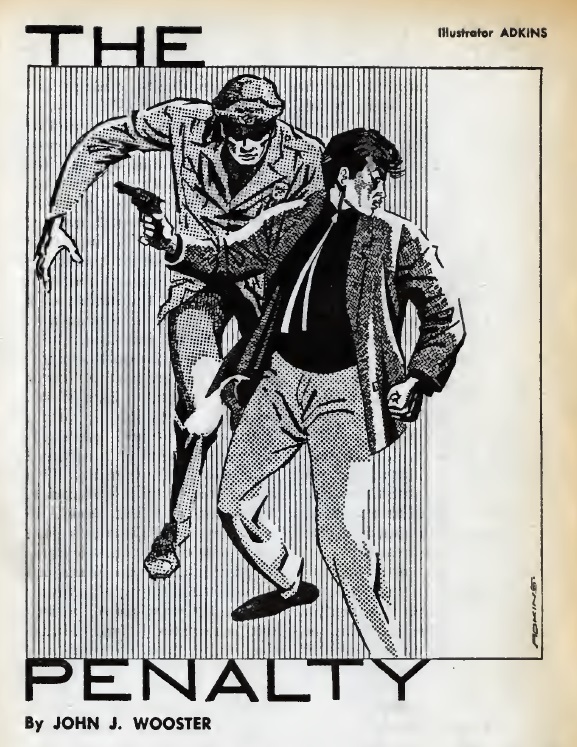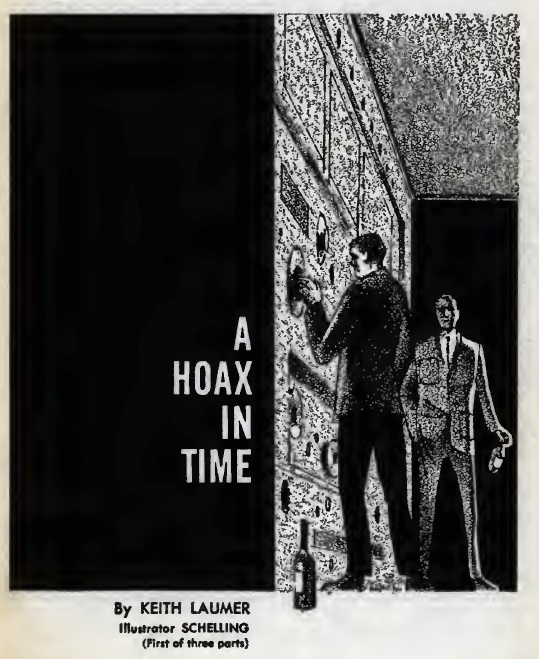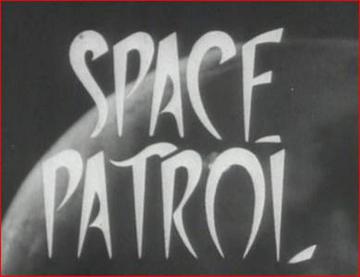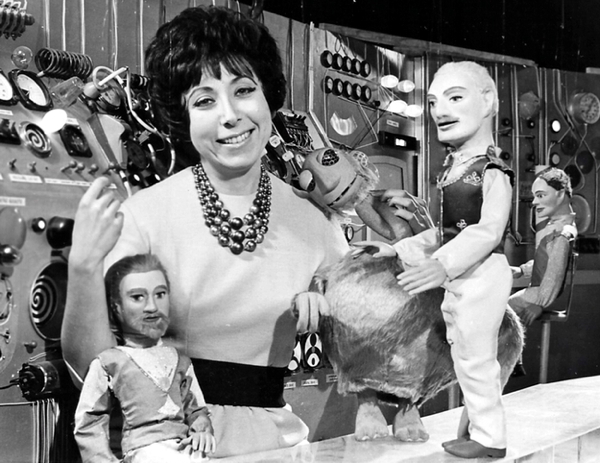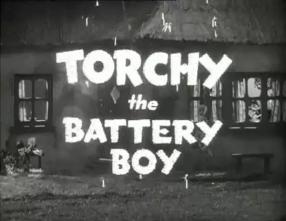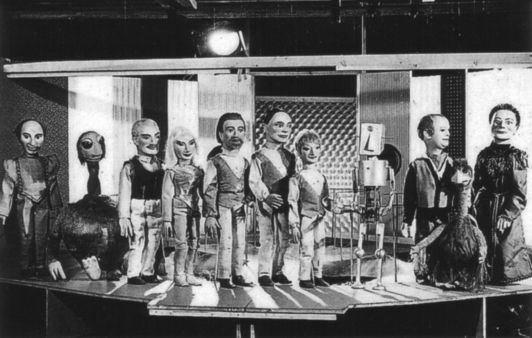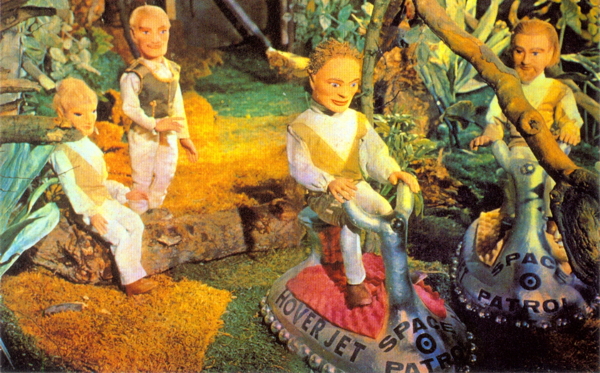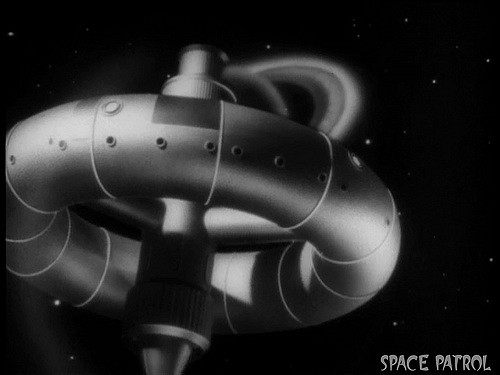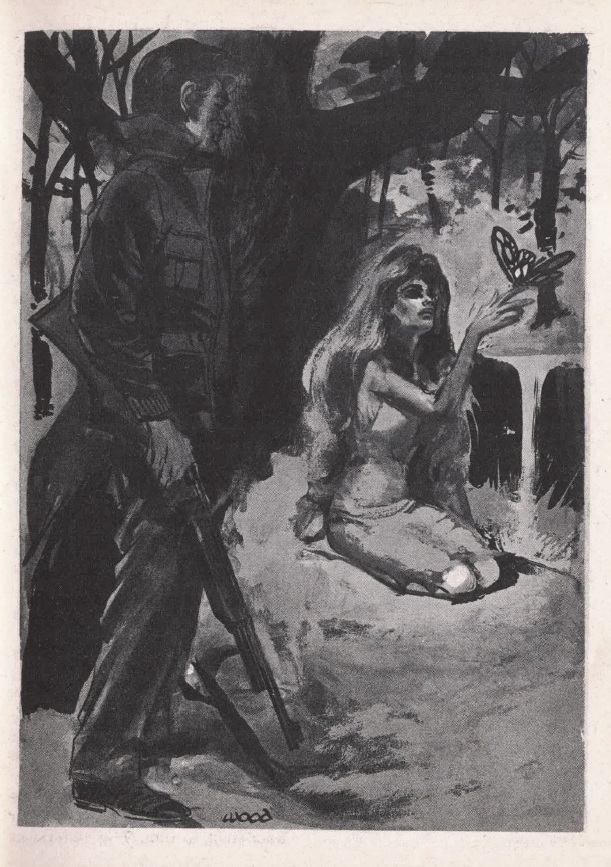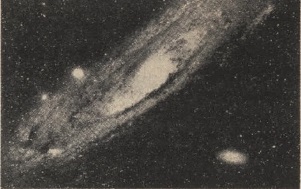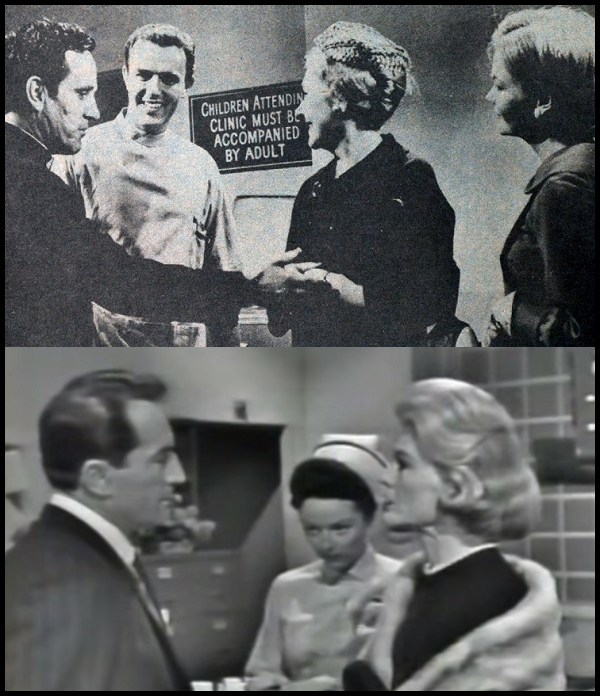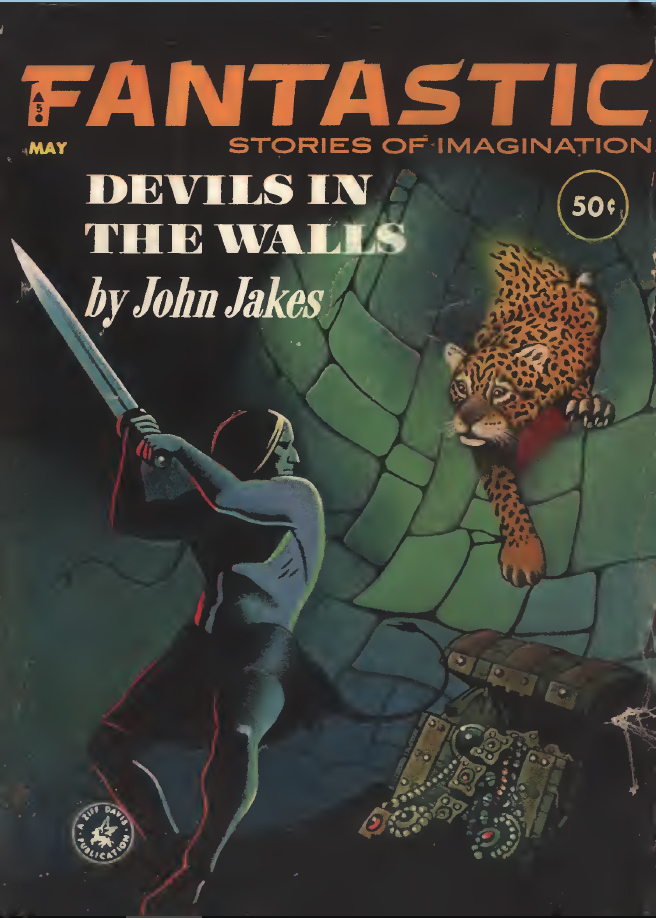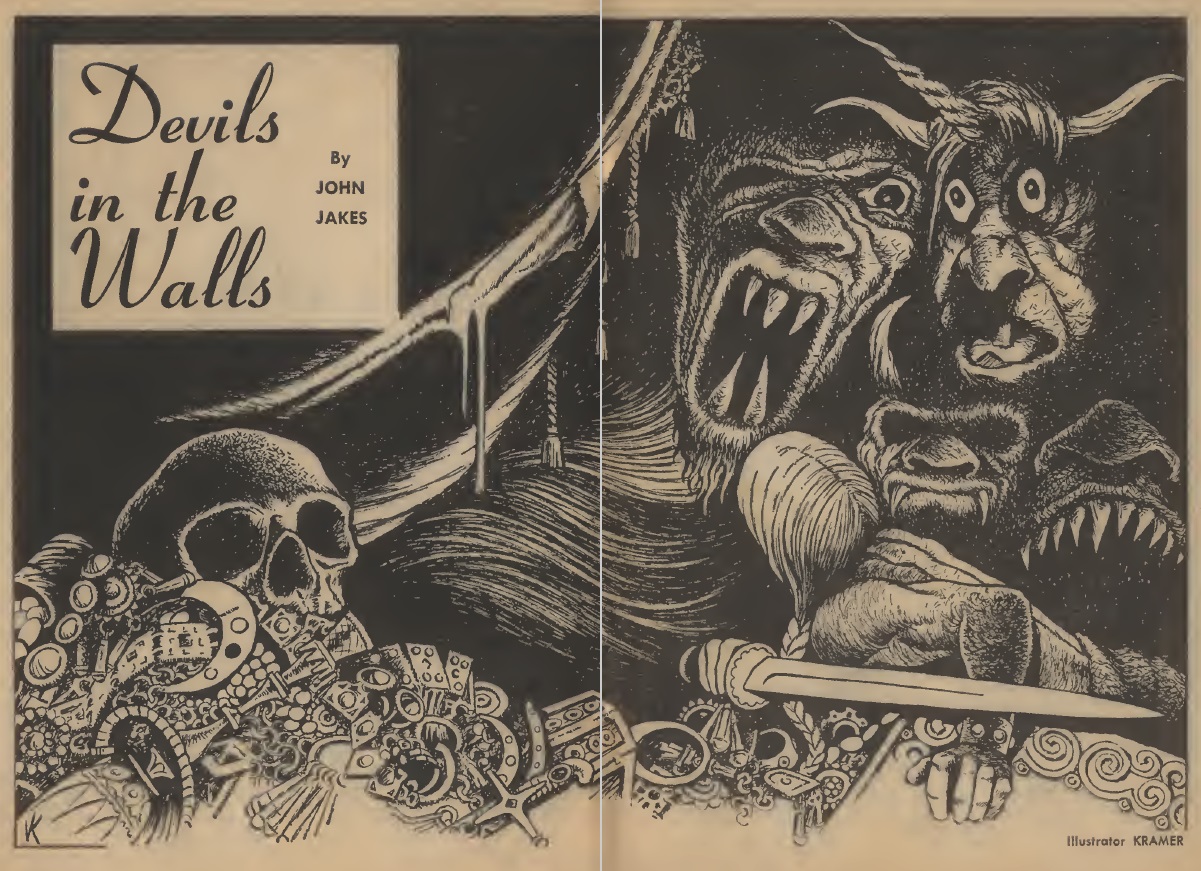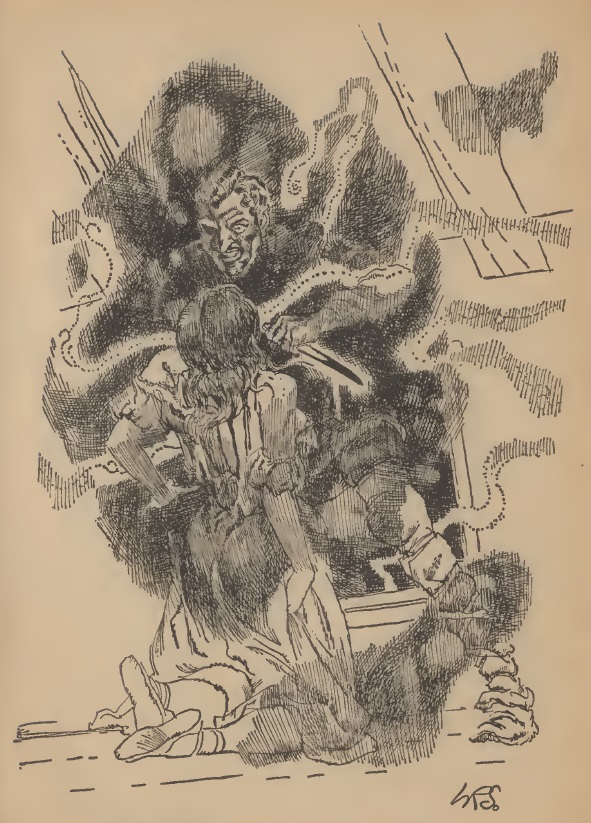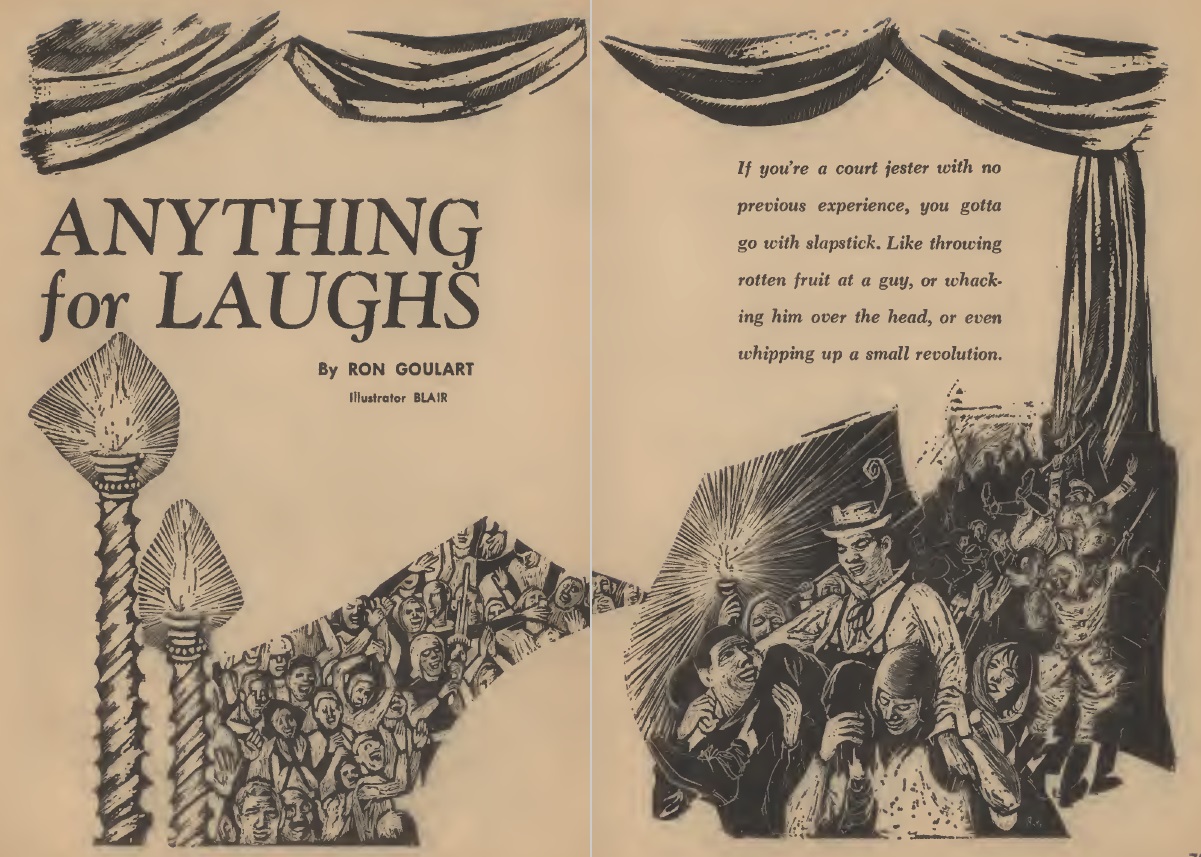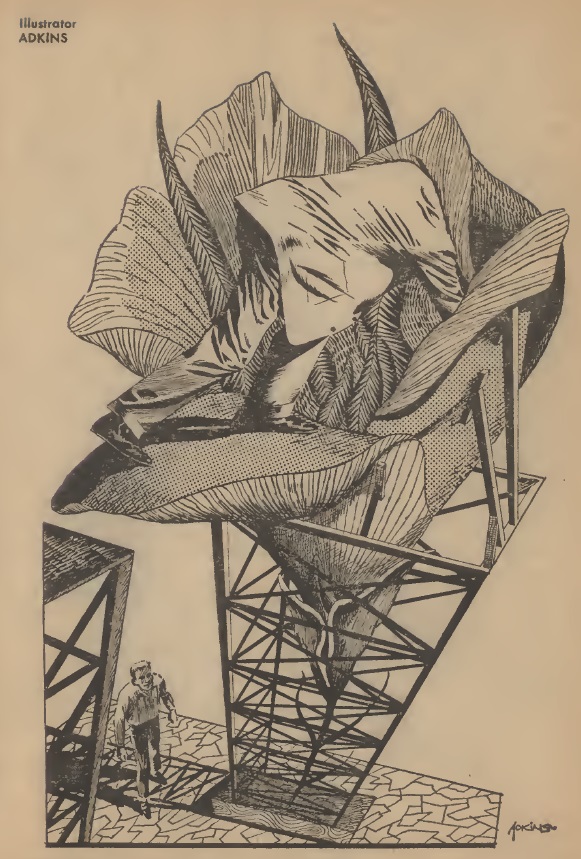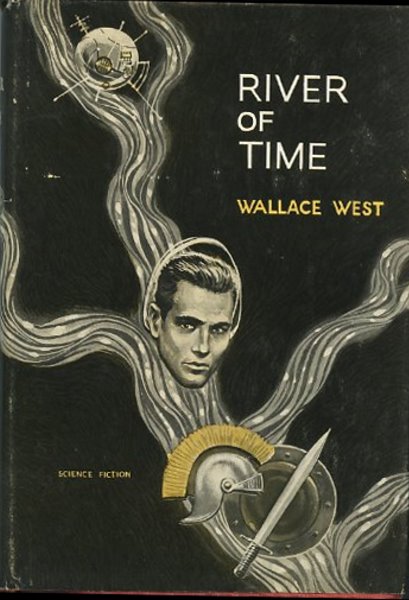
by Mark Yon
One sad piece of news to start with this month. I have just found out that Science Fiction Adventures has published its last, with the May 1963 issue. I understand that sales were not what they used to be in its heyday. It is hoped that this may be a temporary measure, but previous history suggests to me that, sadly, this may be the end. [The latest Science Fiction Times seems to indicate that the cancellation is permanent (ed.)]

If this is part of a general trend, then it may explain some of the recent changes with New Worlds, including this month’s cover:
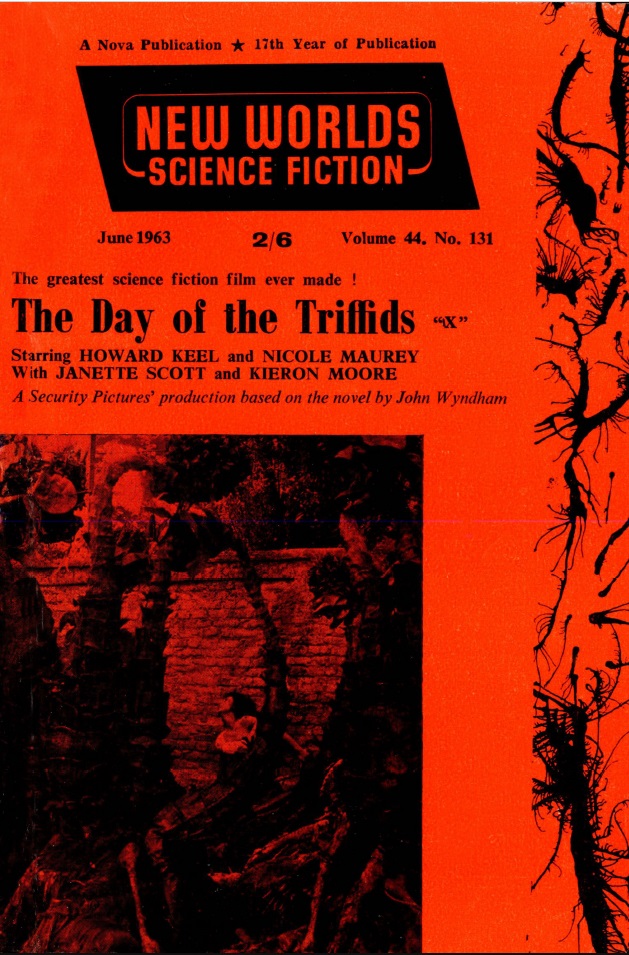
Well, at least this month’s cover doesn’t have the egregious spelling error last month’s issue had. We also have one large photo on the cover, which is an improvement on those of recent months without one.
However, it does raise issues – are things that bad that New Worlds needs the lure of a movie on its cover to raise sales? I think Editor John Carnell has tried to improve sales this month by putting a movie review head and shoulders above the fiction. (This also happened with the July 1962 issue as well, when the cover showed television programme Out of This World.)
More worryingly, with Mr. Carnell being distracted by such events away from New Worlds has he lost his focus on the magazine? I have, in recent months, raised worries about some of the recent changes, which now make sense. The use of Guest Editors over the last year may have given Mr Carnell space and time to sort things out, but I am still concerned that whilst this issue is full of experienced writers and magazine regulars, it the magazine is becoming less about the fiction and more about what is going on outside its pages.
Beer In The Wine Bottle, by Mr. John Ashcroft
This month’s guest editor is another unusual choice. Like Mr. Michael Moorcock, back in March, he is better known for his fiction outside of New Worlds. As the magazine profile suggests, Mr. John Ashcroft has had stories published in sister magazines Science Fantasy and Science Fiction Adventures, but is relatively unknown here.
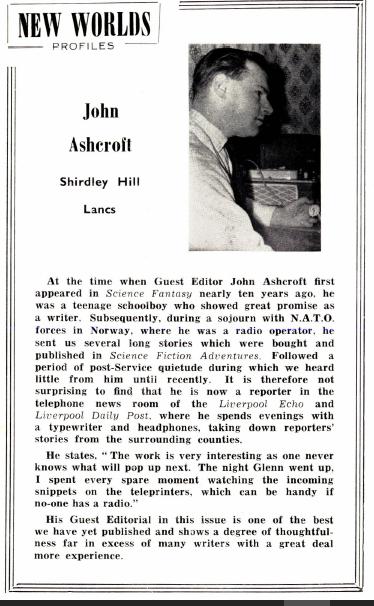
That’s a pretty big claim at the end of the profile, but the Editorial made a point that many s-f readers will appreciate: "Contemporary science fiction is generally more competently written; but it is more complacent." Mr. Ashcroft advocates that that old "sense-of-wonder" is important and that current writers need to raise their game.
From The-Old-Man-In-The-Mountain, by Mr. Joseph Green
I must admit I was not looking forward to Mr. Joseph Green’s novelette this month. As the third story of an unimpressive series (so far), albeit in a longer form, I was prepared to be underwhelmed. However, it is a pleasant enough tale of the increasingly mutual interaction between colonising humans and the hirsute aliens named Loafers, even if the Loafers remind me of Mr. H. Beam Piper’s Little Fuzzies, with added telepathy. In this tale it all turns a bit Midwich Cuckoo with a young Loafer abducted by an embittered human outsider, but, with teamwork from the humans and the aliens, unsurprisingly ends with all being well. A better effort than Mr. Green’s others in the series, if still rather unmemorable. Evidently the last in the series is in next month’s issue. 3 out of 5.

To the other stories.
End-Game by Mr. J. G. Ballard
By contrast, and like Mr. Brian Aldiss last month, this is a welcome return to New Worlds of an author who had moved on to a wider literary field. This is even better than Mr. Ballard’s last tale of consumer stress (The Subliminal Man, January 1963). End-Game is another typically Ballardian tale of isolation and emotional anguish, featuring an imprisoned man to be executed but at a time unknown to him. It becomes a psychological battle of wills between the condemned and his executioner, masked by a series of chess games that imply a fight between a police state and the individual. As with the best of Ballard, it is complex and intelligent, making me believe something that could happen behind the Iron Curtain. It even self-knowingly references Kafka! Not surprisingly, the best story in the issue. 4 out of 5.
Occupation Force, by Mr. David Rome
From another returning regular, Mr. Rome’s tale is quite different to his last (Meaning, December 1962). Occupation Force is a war story, telling of the uneasy relationship between a nuclear-weapon-wielding occupying army and the seemingly innocent oppressed "natives." In these times of campaigns for nuclear disarmament, it is a thought-experiment of a possibility that could also be relevant in 1963. Sadly, it is also short, predictable and, even with the attempt to shock through a downbeat ending, surprisingly forgettable. A lesser effort. 2 out of 5.
Dipso Facto, by Mr. Robert Presslie
Mr. Presslie’s return to New Worlds is also a disappointing effort. Even if I ignored the "poor, dumb natives" angle, this attempt to be humorous in a story of competitive eating and drinking is a long, long way away from the intelligence of similar stories, such as Mr. Poul Anderson’s Nicholas van Rijn tales. It fails pretty quickly. Also 2 out of 5.
Window On The Moon, by Mr. E. C. Tubb
And so to the last of this serial. Last month’s part ended with a couple of shocks – an explosion that destroyed the Royal Commission sent to the British Base, and the Americans who visited the Brits also mysteriously killed on their journey back to their base. This issue deals with the aftermath and gives us a cause for the strange happenings. I’m pleased to say that the US and British bases did not declare war on each other, and it is left to our hero, Felix Larsen, to resolve things. I did predict the villain of the piece a couple of issues ago, but this didn’t stop me enjoying this last part of "Brits in Space." Window on the Moon is a tale told with energy and enthusiasm, even though I felt that it didn’t know how to draw it all together at the end convincingly. Not quite as good at the end as in the earlier parts. It made me wonder what someone like Mr. Arthur C. Clarke would do with it. 3 out of 5.

Film Review: The Day of the Triffids, by Mr John Carnell,
The last part of the magazine is given over to stills and a commentary of this film I looked forward to seeing, back in July 1962, so it is odd to just now get to read a review. The good news is that, I understand, it has recently been released in the USA, so you will be able to see it yourselves. Fellow Traveller Ashley described it in detail back in July. Like her, I was a little disappointed at the differences between the film and Mr. John Wyndham’s fantastic novel, but here Mr. Carnell is more glowing in its fulsome praise, despite the concerns over its delay and production issues. According to the editor, even the author, Mr. John Wyndham, was rather impressed, despite the changes.

In summary, the June issue is, thankfully, another generally solid issue, but with the odd misstep. Not quite as strong as last month’s, but worthy of a read. Despite my concerns mentioned earlier over Mr. Carnell’s editorship, it must be said that the last couple of months have produced issues that have been both memorable and thought-provoking. For all of its faults, there is nothing else quite like New Worlds. I am rather feeling that I must make the most of magazines such as this, whilst I can. I fear that the writing might be on the wall…




